
|

The following is George's "recommended reading list" pulled
from his own library. Each month we will feature a book that recently
joined George's favorites list.
Click
on any book to order now at

The
Advent of
the Algorithm
by David Berlinski

|
Don't be put
off by the author's vagaries and discursions. They are sometimes
poetic and funny, sometimes distracting, but if you press on, you
will encounter a unique tale of the real meaning of the science
and technology of the twentieth century-the overthrow of the materialist
superstition in the heart of mathematics physics, biology, and computer
science. Berlinski was a student of Alonzo Church, who was the most
fruitful protégé of Kurt Godel, who defined the limits of mathematics
and tutored Einstein. This contrarian tour de force is a gripping
adventure in the ideas that matter in the 21st century as it transcends
and surpasses the 20th. —George Gilder
Order
the Book
|
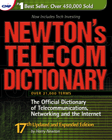
|
Newton's
Telecom
Dictionary, 17th Edition
By Harry Newton
Order
the Book
|
George
Gilder's 's favorite dictionary of telecosm, networking, Internet
and new Economy terms. Over 22,000 terms defined and explained,
benefits weighed and debated. This book is the passion of over 20
years of painstaking research, updating and improving. Although
a dictionary of technical terms, it's not a technical book. Newton
explains terms in non-technical, business language that anyone in
business can understand. He wrote the book for users, vendors, investors
and business executives. He wrote it with style and humor that makes
it a most enjoyable read. Over 600,000 copies have been sold --
making it by far the biggest-selling dictionary of its kind in the
world. Highly recommended.
|
|
A leading physicist,
solid state theorist, and inventor of dynamic holography, Nolte
has reshaped telecosmic theory for the 21st century. Describing
the promise of an all optical Internet and the limitations of human
vision, he envisages a new computing and networking architecture
based on the massive parallelism of holograms. With Avanex and Terabeam
both gaining competitive advantage through holographic techniques,
with Essex pursuing the huge advantages of analog optical processing,
and with Carver Mead transforming the camera in the image of the
human retina, NolteŐs book is a paradigm tour. Lucidly written for
the layman, it explores the parallel advantages of light and image
in the new era of optics. He ends with an intriguing discussion
of quantum computing.
|
This month we will
have two slim books—extended essays—which cast new light on
the onrushing cascade of new paradigm software. One-In the Beginning Was
the Command Line-is a fast, funny, and uncannily perceptive history of
computer operating systems by the incomparable Neal Stephenson, author
of Cryptonomicon, a panoramic historical novel which was one of
the first and best of our books of the month. A former programmer, Stephenson
explains in savvy and acrobatic prose the contribution of Microsoft and
its obsolescence today, and explains why Linux is real—why operating
systems will all be essentially free and open sourced.
The second book is
Machine Beauty by David Gelernter, star of storewidth, who explains
and expounds the assumptions behind his transfiguration of the user interface
through his company Mirror
Worlds, named after his prophetic book by the same title, which essentially
outlined the key features of the ultimate World Wide Web (still under
construction today). Gelernter is an essential guide to the future of
computer interfaces and databases.
|

The
Quantum Brain
by
Jeffrey Satinover
The
Search for Freedom and the Next Generation of Man
The
Quantum Brain is an adventure in the science of ideas. It is the
first book on the brain that combines a grasp of the physics of
the microcosm and the technologies of artificial intelligence, neural
networks, and self-organizing systems, with a recognition of the
transcendant properties that define the mind and differentiate it
from matter. Although the subject is inherently difficult and novel,
Jeffrey Satinover is an inspired guide through the fertile areas
of convergence among the pivotal sciences of the age. From such
insights will emerge both new technologies and new philosophies
and theologies for the Twenty First Century. Order
the Book
|
 |
Basic Economics
A
Citizen's Guide to the Economy
by
Thomas Sowell |
Thomas Sowell
is widely known as a masterly writer on the intricacies of race
and culture around the globe. His recent autobiography offers a
fascinating vista into his amazing life battling the forces of political
correctness on issues of race. But Sowell began as a superb economic
theorist, bringing to light the foundational principles of supply
side economics in Says Law ("Supply creates its own demand")
and Knowledge and Decisions. Now he has summed up a lifetime
of economic wisdom in this definitive text, Basic Economics:
A Citizen's Guide to the Economy. He offers pithy and trenchant
accounts of a wide range of issues, from the perversity of rent
controls and the wastefulness of recycling to the irrelevance of
sex and race in income data and the true role of government in economy.
Order
the Book
|
|
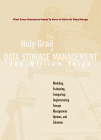 The
Holy Grail of Data Storage Management The
Holy Grail of Data Storage Management
What
Every Enterprise Needs to Know to Solve Its Data Deluge
by Jon William Toigo
An
excellent primer on network storage-perhaps the only in depth, book
length treatment of the subject. The book does, however, suffer
from conventional thinking. In particular, Toigo buys into the flawed
notion that the number one reason for SAN architectures is to save
network bandwidth.
Recommended
as good background reading on enterprise storage.
|
 |
Collective
Electrodynamics
Quantum
Foundations of Electromagnetism
by
Carver A. Mead |
The book of
the month (and perhaps of the decade; time will tell) is Collective
Electrodynamics by Carver Mead, written is his copious free
time while launching a revolution in the camera business with the
Foveon imager. Mead's climactic speech at Telecosm, ending with
a prolonged standing ovation, focused less on Foveon's amazing new
chip and its impact on cameras than on his new book and its promise
of a revolution in the physics of the electromagnetic spectrum.
Some mathematics afflicts about two-thirds of the chapters, but
the rest are readable and riveting.
Order
the Book
|
|

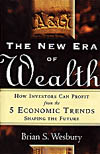 The
New Era of Wealth The
New Era of Wealth
How
Investors Can Profit from the 5 Economic Trends Shaping the Future
by
Brian S. Wesbury
The
first book with a Telecosm List, a supply-side tilt, and a Greenspan
critique, Brian Wesbury's pithy tome castigates the prevailing medianomics
and offers a felicitous guide for investing in the new economy.
—GG
|
 The
Innovator's Dilemma The
Innovator's Dilemma
When New Technologies Cause Great Firms to
Fail
By Clayton M. Christensen
"The
most profound and useful business book ever written about innovation,
it catapults its softspoken author abruptly into the class of Burnham
and Drucker."
—George Gilder, October 1998 GTR |
 Only
the Paranoid Survive Only
the Paranoid Survive
The Threat & Promise of Strategic Inflection
Points
By Andrew S. Grove
"As
a strategic fact, defining the conditions of the business and the
opportunities of the era, broadband is now. This is a fundamental
paradigm shift-an inflection point like those described in Andy Grove's
riveting new book, Only the Paranoid Survive."
—George Gilder, August 1996 GTR |
 Adventures
of a Bystander (Trailblazers, Rediscovering the Pioneers of Business) Adventures
of a Bystander (Trailblazers, Rediscovering the Pioneers of Business)
By Peter F. Drucker |
 The
Effective Executive The
Effective Executive
By Peter F. Drucker
|
|
 Being
Digital Being
Digital
By Nicholas Negroponte
|
 The
Twilight of Sovereignty The
Twilight of Sovereignty
How the Information Revolution is Transforming
Our World
by Walter B. Wriston
|
 The
End of Money and the Struggle for Financial Privacy The
End of Money and the Struggle for Financial Privacy
by Richard W. Rahn
Former
Chief Economist of the National Chamber of Commerce, Richard Rahn
has peered deeply into the heated caldron of money, encryption, privacy,
bandwith and bureaucracy and emerged with a stark and stormy vision
of the future. This crisply written text foresees a concussive collision
of new technologies and old institutions, such as banks and nations,
debts and taxes, and a new world of web commerce on the other side. |
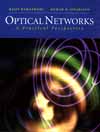 Optical
Networks Optical
Networks
by Rajiv Ramaswami and Kumar N. Sivarajan
This
book is a lucid and practical exposition of the optics state of
the art by two protege's of Paul Green. Skip the denser math if
you want and you still can deepen your knowledge of this incandescent
field. You can also expose yourself to the thinking of Rajiv Ramaswami,
who is moving to Silicon Valley to guide an exciting startup in
optical switching, called XRos, into the frontiers of the telecosm.
|
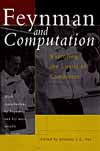 Feynman
and Computation Feynman
and Computation
Exploring the Limits of Computers
Edited by Anthony J.G. Hey
(not to be confused with Feynman Lectures on Computation)
This book contains
three seminal lectures by Carver Mead, who co-taught the course with
Feynman, and includes many vivid recollections of and by the world's
greatest physicist in interplay with the world's leading computer
scientists.
"For a successful technology, reality must take precedence over
public relations, for Nature cannot be fooled."
—Feynman on the Challenger disaster
|
 Computer
Architecture Computer
Architecture
A Quantitative Approach
By David A. Patterson & John L. Hennessy
A leader in the
debate over the structure of tomorrow's computers, "David Patterson
explained how many of the problems with current computer architecture
could give way to an intelligent RAM architecture. He favors use
of parallel vector processors programmable through the means familiar
in vector Cray supercomputers."
—George Gilder, October 1997 GTR
|
|
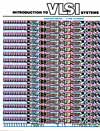 Introduction
to VLSI Systems Introduction
to VLSI Systems
By Carver Mead & Lynn Conway
|
 Feynman
Lectures on Physics Feynman
Lectures on Physics
By Richard P. Feynman
|
|
 Analog
VLSI and Neural Systems Analog
VLSI and Neural Systems
By Carver Mead
|
 Computer
Organization and Design Computer
Organization and Design
The Hardware/Software Interface
By David A. Patterson & John L. Hennessy
|
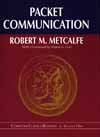 Packet
Communication Packet
Communication
By Robert M. Metcalfe
Bob Metcalfe invented ethernet
and was a founder of 3Com. His 1973 doctoral dissertation, Packet
Communication, is a classic text in the development of the communications
protocols at the core of the Telecosm.
"In the new paradigm, the Moore's Law advance of MIPS and bits
gives way to the Metcalfe's Law explosion of bandwidth." —George
Gilder, August 1996 GTR |
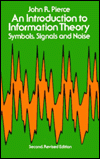 An
Introduction to Information Theory An
Introduction to Information Theory
Symbols, Signals and Noise
By John R. Pierce
"Shannon's work is
shrouded in hardcore math and the explanation can be skipped if
you want. But it is worth getting a glimpse of his vision. It is
most clearly expounded by his leading apostle, John R. Pierce of
Bell Laboratories, in a book called An Introduction to Information
Theory."
—George
Gilder, June 1998 GTR
|
|
 Fiber
Optic Networks Fiber
Optic Networks
By Paul E. Green
"the leading text on fiber networks"
—George Gilder, February 1997 GTR
|
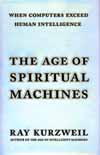 The
Age of Spiritual Machines The
Age of Spiritual Machines
When Computers Exceed Human Intelligence
By
Ray Kurzweil
|
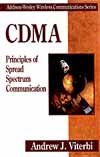 CDMA
Principles of Spread Spectrum Communication CDMA
Principles of Spread Spectrum Communication
By Andrew J. Viterbi
Viterbi presents the mathematical
bridge between Shannon's theories and today's most advanced wireless
technology.
"For many years, few noticed the full significance of [Shannon's]
baffling message. Andrew Viterbi, the famed author of the Viterbi
algorithm, now at Qualcomm, was one of the few. With Jacobs and Gilhousen,
they set out to fulfill the Shannon mandate. In the Telecosm today,
physics, optics, engineering, signals, and noise all are now beginning
to whirl centrifugally in Shannon's hyperspace. Just as Wavelength
Division Multiplexing is the wireline expression of Shannon's vision,
CDMA is the wireless form of "wide and weak."
—George Gilder, June 1998 GTR |
 Claude
Elwood Shannon Claude
Elwood Shannon
Collected Papers
By Claude E. Shannon
"As early as 1949,
Claude Shannon, the inventor of information theory, defined the
crucial tradeoffs of a regime of bandwidth abundance. Bandwidth,
he showed, can substitute both for switching and for power. The
new paradigm requires that successful companies of the new era pursue
this crucial trade off among the emerging technologies of sand and
glass and air."
—George
Gilder, July 1996 GTR
"The great astronomer and physicist Kepler wrote: "I cherish
more than anything else the Analogies.They know all the secrets
of nature." For the Microcosm, the model was to move to the center
of the sphere, at the atomic level, where power was concentrated.
With an uncanny analogy of communications to multi-dimensional geometry,
however, Claude Shannon in 1948 supplied a new spherical analogy
for the Telecosm. An MIT professor with close ties to Bell Laboratories,
he developed information theory to gauge the potential capacity
of any communications channel in the presence of noise. This work
took the theory of the Telecosm from the center of the sphere, where
power was unlimited and bandwidth scarce, to the surface of the
sphere, where the results were weirdly wide and weak and counterintuitive."
—George Gilder, June 1998 GTR
|
 |
|



